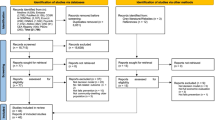Abstract
Background and Objective
The literature has shown that different baseline adjustment approaches lead to different results when examining cost and quality-adjusted life-years. To our knowledge, the concept of baseline adjustment in a net benefit (NB) regression has not been studied. The purpose of the study was to explore the impact of different baseline adjustment approaches in an NB framework on the cost effectiveness of an intervention using person-level data.
Methods
This study used data from a randomized controlled trial that evaluated the effectiveness of a multifactorial falls prevention intervention for older home care clients. The outcome was the number of falls at the 6-month follow-up. The cost variable was the total healthcare costs from a societal perspective. Incremental NB values were estimated using four baseline adjustment approaches: (1) the change in NB is the dependent variable; (2) the NB at follow-up is the dependent variable without adjusting for baseline values; (3) the NB at follow-up is the dependent variable adjusting for baseline NB; and (4) the NB at follow-up is also the dependent variable adjusting for baseline cost and effect separately.
Results
With adjustment of baseline values (Approach 1, 3, 4), the intervention was not cost effective when compared to usual care. Conversely, without baseline adjustment (Approach 2), the intervention was cost effective if decision-makers’ willingness-to-pay per fall prevented was CAN$10,000 or greater.
Conclusions
This study showed that different baseline adjustment approaches in a cost-effectiveness analysis can lead to different results. Future research is needed to determine the most appropriate adjustment approach in planning economic evaluation using NB regression.

Similar content being viewed by others
References
Manca A, Hawkins N, Sculpher M. Estimating mean QALYs in trial-based cost-effectiveness analysis: the importance of controlling for baseline utility. Health Econ. 2005;14:487–96.
Ramsey S, Willke R, Briggs A, Brown R, Buxton M, Chawla A, et al. Good research practices for cost-effectiveness analysis alongside clinical trials: The ISPOR RCT-CEA Task Force report. Value Health. 2005;8(5):521–33.
Isaranuwatchai W, Brydges R, Carnahan H, Backstein D, Dubrowski A. Comparing the cost-effectiveness of simulation modalities: a case study of peripheral intravenous catheterization training. Adv Health Sci Educ Theory Pract. 2014;19(2):219–32.
Senn S. Testing for baseline balance in clinical trials. Stat Med. 1994;13:1715–26.
Lavori P, Louis T, Bailar JI, Polansky M. Designs for experiments—parallel comparisons of treatment. N Engl J Med. 1983;309:1291–8.
Senn S. Covariate imbalance and random allocation in clinical trials. Stat Med. 1989;8:467–75.
Altman D, Dore C. Baseline comparisons in randomized clinical trials. Stat Med. 1991;10:797–802.
Pocock SJ, Assmann SE, Enos LE, Kasten LE. Subgroup analysis, covariate adjustment and baseline comparisons in clinical trial reporting: current practice and problems. Stat Med. 2002;21:2917–30.
Assmann SE, Pocock SJ, Enos LE, Kasten LE. Subgroup analysis and other (mis)uses of baseline data in clinical trials. Lancet. 2000;355:1064–9.
van Asselt AD, van Mastrigt GA, Dirksen CD, Arntz A, Severens JL, Kessels AG. How to deal with cost differences at baseline. Pharmacoeconomics. 2009;27(6):519–28.
Hoch J, Briggs A, Willan A. Something old, something new, something borrowed, something blue: a framework for the marriage of health econometrics and cost-effectiveness analysis. Health Econ. 2002;11:415–30.
Markle-Reid M, Browne G, Gafni A, Roberts J, Weir R, Thabane L, et al. The effects and costs of a multifactorial and interdisciplinary team approach to falls prevention for older home care clients “at risk” for falling: a randomized controlled trial. Can J Aging. 2010;29(1):139–61.
Markle-Reid M, Henderson S, Hecimovich C, Baxter P, Anderson M, Browne G, et al. Reducing fall risk for frail older home care clients using a multifactorial and interdisciplinary team approach: the design of a randomized controlled trial. J Patient Saf. 2007;3(3):149–57.
Kenny RA, Rubenstein L, Martin F, Tinetti M. Guideline for the prevention of falls in older persons. J Am Geriatr Soc. 2001;49(5):664–72.
MacAdam M. Home care: it’s time for a Canadian model. Healthc Pap. 1999;1(4):9–36.
Registered Nurses’ Association of Ontario. Nursing best practice guideline: prevention of fall injuries in the older adult. Registered Nurses’ Association of Ontario Nursing Best Practice Guidelines Program, Toronto, Ontario, Canada. 2005. http://rnao.ca/sites/rnao-ca/files/Prevention_of_Falls_and_Fall_Injuries_in_the_Older_Adult.pdf. Accessed July 2011.
Browne G, Gafni A, Roberts J. Approach to the measurement of resource use and costs (Working Paper S06-01). Hamilton: McMaster University, System-Linked Research Unit on Health and Social Service Utilization; 2006.
Gillespie L, Robertson M, WJ G, Lamb S, Gates S, Cumming R et al. Interventions for preventing falls in older people living in the community. Cochrane Database Syst Rev. 2009;2:CD007146. doi:10.1002/14651858.CD007146.pub2.
Markle-Reid M, Browne G, Gafni A, Roberts J, Weir R, Thabane L, et al. A cross-sectional study of the prevalence, correlates, and costs of falls in older home care clients ‘at risk’ for falling. Can J Aging. 2010;29(1):119.
Gold M, Siegel J, Russell L, Weinstein M. Cost-effectiveness in health and medicine. New York: Oxford University Press; 1996.
Hoch J, Rockx M, Krahn A. Using the net benefit regression framework to construct cost-effectiveness acceptability curves: an example using data from a trial of external loop recorders versus Holter monitoring for ambulatory monitoring of “community acquired” syncope. BMC Health Serv Res. 2006;6(1):68.
Vickers A, Altman D. Statistics notes: analysing controlled trials with baseline and follow up measurements. BMJ. 2001;323:1123–4.
Gallagher E, Brunt H. Head over heels: Impact of a health promotion program to reduce falls in the elderly. Can J Aging. 1996;15(1):84–96.
Study funding
Canadian Patient Safety Institute (CPSI Grant Number RFAA0506164). Canada Research Chairs Program (MM-R).
Conflict of interest
The authors declare that they have no conflict of interest.
Author contributions
WI (Guarantor for the paper’s overall content): conducted the analysis and wrote the paper.
MM-R: provided access to data and reviewed the paper.
JSH: supervised the analysis and reviewed the paper.
Author information
Authors and Affiliations
Corresponding author
Electronic supplementary material
Below is the link to the electronic supplementary material.
Rights and permissions
About this article
Cite this article
Isaranuwatchai, W., Markle-Reid, M. & Hoch, J.S. Adjusting for Baseline Covariates in Net Benefit Regression: How You Adjust Matters. PharmacoEconomics 33, 1083–1090 (2015). https://doi.org/10.1007/s40273-015-0287-6
Published:
Issue Date:
DOI: https://doi.org/10.1007/s40273-015-0287-6




